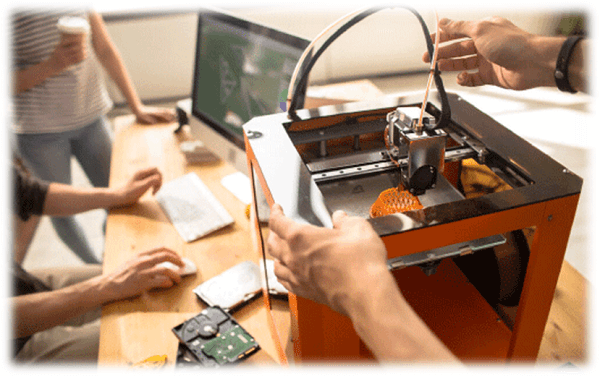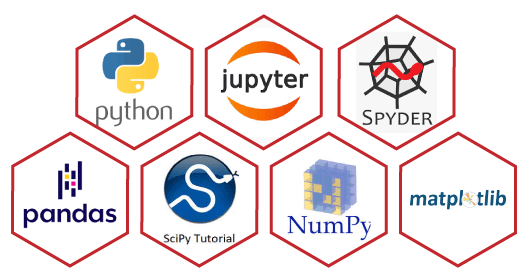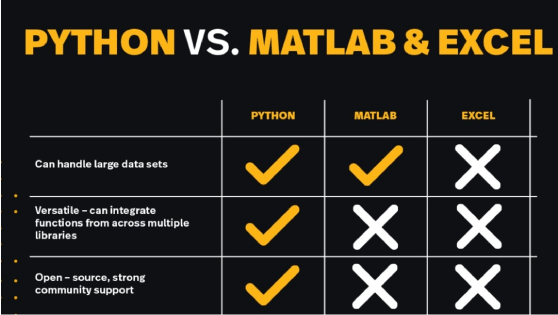Python For Mechanical Engineers
How do mechanical engineers utilize programming languages like Python?Python is intended to be a straightforward, brief, and natural programming language. For that reason, numerous architects and analysts use Python for consistent and mathematical applications. Maybe they need to get straightforwardly to the point rapidly, for instance, grasping the impact or relationship of a variable with a yield, rather than going through numerous hours concentrating on the intricacies of an "unsure" programming language. Python can empower a quicker and smoother work process, re-enact monstrous measures of information, and, in particular, robotize dreary and tedious exercises with the goal that they might be finished in no time flat. How precisely might you at any point manage Python as a mechanical engineer?Running mathematical investigation is quite possibly the most advantageous thing we can do with the assistance of Python. With Python's various libraries, for example, SciPy and NumPy, we might use worked strategies to lead mathematical examinations speedier and more effectively than at any time in recent memory. SciPy permits us to incorporate, show, and, surprisingly, be inadequate while never playing out a manual calculation. This saves a lot of time. Probably the most well-known Python libraries are displayed here: 
Three major fields of mechanical engineering usage:
Numerical Analysis - Important aspect of mechanical engineeringThe most famous use of Python is to perform mathematical investigations. When issues with straight conditions and PDE/ODE are involved, it would require a long investment to take care of the issues systematically. Regarding mechanical designing, there are generally limited conditions, making it two times harder to take care of mathematical examination issues. Allow us to expect you are attempting to find the tension contrast across a line when there is a fluid moving through it. Not exclusively will the issue consume a huge chunk of time to settle, yet it will likewise be very difficult to get exact qualities or plot the distinctions in a chart. With programming dialects, you can take care of such issues immediately and get graphical reproductions at a similar moment. Learning mathematical examination and coding opens up plenty of chances in regions like assembling, auto, energy, and, surprisingly, mechanical positions in programming organizations (like warm specialists). Programming organizations like Facebook and Google enlist Thermal/Mechanical specialists to guarantee effective and safe warm administration of their data set and bunch PCs in their separate organizations. These specialists use programming dialects like Python /MATLAB to compose scripts and import them to CFD programming to test various plans. Common sense Google has the accompanying designing adage "Python where we can, C++ where we should" because Python is less mind-boggling to use than C++. Computational Fluid Dynamics - Important aspect of mechanical engineeringPython writing computer programs is likewise a solid match for computational liquid elements. PyCFD is utilized to make and deal with fractional differential conditions, process liquid volumes utilizing Navier-Stokes recipes, and address limit esteem halfway differential conditions utilizing the limit component approach. Generally, mechanical specialists enjoy three significant benefits in their working environments. To start, remember that your contents, similar to your associate's code, can be utilized by the remainder of the association whenever you've made them. These recover everybody's time and assist you with working as a group more effectively. Furthermore, we can increment computerization much more by utilizing a stage like Onshape to prearrange specific highlights. This successfully lets us make unique elements for our applications quickly and effectively. Custom bars, airfoils, prod gears, beam tracers, and wiring are among them. Utilization of CFD
Thermodynamics - Important aspect of mechanical engineeringThermodynamics: Thermodynamics is a part of physical science that arrangements with intensity, work, and temperature and their connection to energy, entropy, and the actual properties of issue and radiation. The way of behaving of these amounts is represented by the four laws of thermodynamics which convey a quantitative depiction utilizing quantifiable visible actual amounts, yet might be made sense of with regards to tiny constituents by factual mechanics. Thermodynamics applies to a wide assortment of points in science and designing, particularly actual science, natural chemistry, substance designing, mechanical designing, and other complex fields like meteorology. Thermodynamics was created out of a longing to expand the productivity of early steam motors, crafted by French physicist Sadi Carnot (1824), who accepted that motor effectiveness was the key that could end up being useful to France in winning the Napoleonic Wars. Scots-Irish physicist Lord Kelvin quickly formed a brief meaning of thermodynamics in 1854, expressing, "Thermo-elements is the subject of the connection of intensity to powers acting between bordering portions of bodies, and the connection of intensity to the electrical organization." Rudolf Clausius rehashed Carnot's guideline known as the Carnot cycle and gave so the hypothesis of intensity a more genuine and sounder premise. His most significant paper, "On the Moving Force of Heat", distributed in 1850, first expressed the second law of thermodynamics. In 1865 he presented the idea of entropy. In 1870 he presented the virial hypothesis, which applied to warm. Python in Thermodynamics
Advantages Of Python In Mechanical EngineeringNumerous mechanical designers know nothing about this. Assuming you give Python and Jupyter Lab a decent attempt, you'll see that you can get things done quickly and that it's not difficult to dig further into the calculations. It will help you find an answer to your concern in the capricious assembling plan, and that's just the beginning. There are a few outcomes completed of tests that were then dissected. By setting an incentive for every boundary on one pivot, a progression of diagrams contrasting the various advancements assessed was made in under 10 lines with the assistance of Python. Something that requires extra Excel information handling. A mathematical investigation is the most well-known Python application. At the point when direct conditions and ODE/PDE are involved, tackling issues scientifically would take extensive time. This makes tackling mathematical examination issues twice as complicated in mechanical design since limit conditions are normal. Take the instance of a fluid moving through a channel. For novices, it would be hard to tackle the issue and gain exact figures and diagrams showing aberrations. With programming dialects, you might settle such issues in no time flat and get graphical reenactments simultaneously, therefore. Advantages:
Python vs MATLAB for Mechanical EngineersWe may likewise see the contrast between MATLAB and Python. Although the two dialects are deciphered, they vary in specialized and reasonable viewpoints. Python is more flexible than MATLAB regarding its usefulness, and the local help area for it is significantly more dynamic than Matlab's. Simulink, MATLAB's recreation, and model-based plan device is the special case. This is generally because of their different techniques for improvement, which are as follows: MATLAB is an authorized, shut-source program, though Python is an open-source project with many benefactors adding to its prosperity. This boils down to two or three significant Python benefits. We can achieve more with less because of Python's adaptability. Subsequently, methods are rearranged, and less human information is required. Everybody realizes what happens when a firm has such a large number of calculation sheets, isn't that so? Because of Python programming, we can unite quite a bit of this work into a solitary bound together stage. 
All Mechanical Engineers should consider Learning Python programming language.PC programming may not be our concentration as mechanical specialists, but these abilities are essential in the present advanced world. Learning an easy-to-understand language like Python can deliver gigantic profits. Since this language comes pre-outfitted with every one of the logical and numerical instruments we want, it's not difficult to extend Python prearranging into many use cases as your control over it develops. There's a valid justification we've seen such a transient ascent in Python's prevalence. It's one of three authority dialects at Google. It's the reason for significant administrations like Netflix and Dropbox. Very much like these web benefits, our mechanical plans benefit from Python mastery.
Next TopicPython Module xxHash
|
 For Videos Join Our Youtube Channel: Join Now
For Videos Join Our Youtube Channel: Join Now
Feedback
- Send your Feedback to [email protected]
Help Others, Please Share










